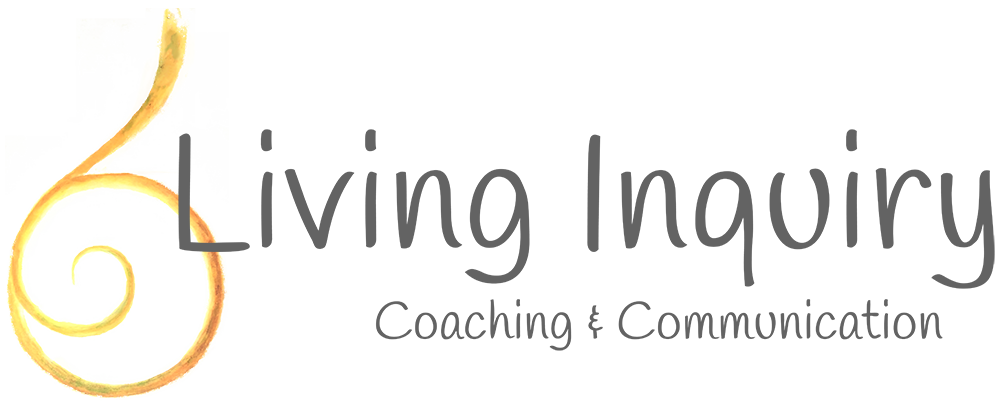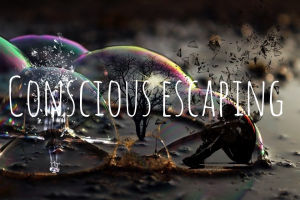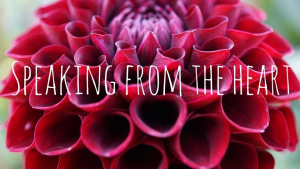There are many ways we can practice Inquiry. We can do it alone or with a facilitator, with a silent listener or an active listener, in group or through writing. In this post I will share some different ways you can engage in an Inquiry practice more practically and like always, I invite you to find out for yourself in your own experience what works for you and how you enjoy to explore.
FORMS OF INQUIRY QUESTIONS
I will mention two possible approaches of questioning within all of these fields:
- An Open-ended question which means that we are simply following what is alive in us in this moment. You can choose an area or begin with a question and then you let whatever shows up move the inquiry.
- A Repeated question which means that we simply stay with a question we have chosen for a few minutes (we can decide the time before if it supports us) and ask it over and over again, answering whatever comes to us in the moment.
The third option I shortly will mention is
- A dialectical inquiry which means that you also include the field between you and the person you sit together with – what is happening between you, in your meeting in every moment and how that is reflected in your experience. This is a beautiful and deeply connective practice, that shows us the relationship and interconnection between the inside and outside world.
FORMS OF INQUIRY PRACTICES
Self Inquiry
You can say that inquiry always is Self Inquiry, I just like to seperate them in order to see that you can practice it alone as well as together with someone else. Self inquiry is when you explore your own present experience, either in an open-ended way or through a specific repeated question(s).
When I am doing my own practice, without the support from someone else, I love to practice self inquiry through writing. The movement, the physical engagement supports me in following the red thread and let it unfold, while at the same time to hold a distance of witnessing so that I don’t get caught in my mind trying to “solve something” or get goal oriented. I experience it like an “emotional cleansing”, I am emptying myself and reconnecting to spaciousness
Self Inquiry is a way to live – noticing what is happening inside, how the experience is shifting and the relationship to the outside world. Noticing, allowing, exploring, sharing. Being interested in our own reactions, patterns, feelings and connecting them to our deeper needs within the present moment.
You can also Inquiry in sitting meditation, simply opening the meditation with a question as an invitation and witnessing whatever arise in silence. Or use art or movement such as dancing as a way to express and move with your experience.
Inquiry two and two
We can also Inquire together with someone else which can be very supportive and healing in the sense of presence and also a great deal of fun! As for the person exploring – choose if you want to do a open-ended or repeated question.
The person holding space can either support you by:
- Silent Listening offering her/his presence in silence if it is an open-ended inquiry or repeatingly asking the question for the person exploring to answer, receiving it in silence.
- Reflective listening offering silent listening and mirroring back what he/she heard the person inquiring share. Being mirrored is a support to see oneself more clearly and to get the opportunity to go deeper and also check if what we get mirrored back really was our experience. To be heard in this way, to not only sense the others presence but to get the reassurance that we are being heard and received can be very healing and joyful.
- Active Listening offering silent listening and questions that spontaneously and intuitively comes when hearing the person inquiring share. This is with the intention to deepen the inquiry, so we want to follow it and only ask questions to move it forward when it is getting a bit stuck and not push it in any specific direction. Basically it is to allow your curiosity to manifest into questions about the others experience. It is not to reflect any opinion or give advice.
To read more about how to deepen your listening, read my post “The art of listening – relax and enjoy”
Inquiry in group
Practicing Inquiry can be very powerful because the field of presence is bigger. You can for example explore one and one with the whole group holding space or go in a circle one at the time answering the same repeated question.
The first option I like to use when there is an open-ended exploration and when the group is a bit smaller (up to around 5 people). It can be practiced through silent, reflective or active listening (as in two and two), where the whole group is participating to support the one exploring.
I like to practice circle inquiry when the group is bigger or if there is a specific theme we are exploring. It ́s then done with one question, repeated, moving from each one in the circle answering shortly (with 1-2 sentences) and you can choose how many laps you want to go with each question.
SELF INQUIRY INVITATIONS TO PRACTICE INQUIRY:
What area and specific questions within that area of life are most alive in you in this moment? Take a few minutes and write down the questions that comes up in you and then pick a way to explore one/a few/all of them. Notice the effect afterwards and add a few minutes exploring into how your experience was, learnings ec.
If you are curious and want to read more about Inquiry, A. H. Almaas wrote a super extra amazing book about it (one of many of his) called “Spacecruiser Inquiry: True Guidance for the inner journey”, Find it here!



